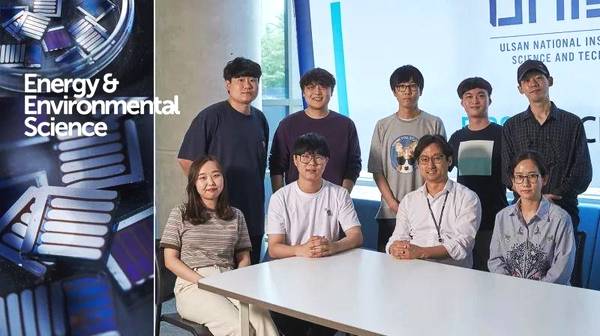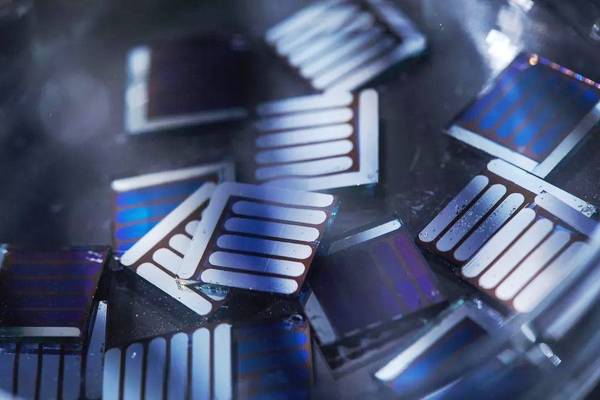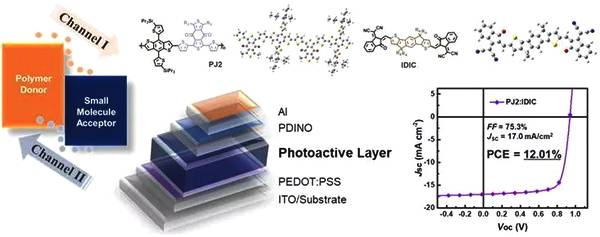Guide Recently, the research team of Ulsan National University of Science and Technology in South Korea has successfully proposed a new method that can solve the problems related to the thickness of the optically active layer in organic solar cells. This new method will promote process design and further promote the commercialization of organic solar cells. background Solar energy has many advantages such as clean, environmental protection, renewable, easy to obtain, low cost, etc. It is a new energy with great development and utilization value, and has been widely developed and utilized. However, solar cells are a typical way of using solar energy, which can convert solar energy into electrical energy and store it. Today, the dominant solar cell is still made of inorganic semiconductors as the main material, and the commercial applications of silicon-based solar cells of the monocrystalline silicon, polycrystalline silicon and amorphous silicon series are the most extensive. However, traditional silicon-based inorganic solar cells have the disadvantages of high manufacturing cost, large manufacturing energy consumption, high pollution, and complicated processes. In addition, traditional inorganic solar cells are bulky, rigid, and fragile, which is inconvenient to transport and flexible to install and use. However, emerging organic solar cells (OSCs) have lower manufacturing costs and simpler manufacturing processes. They also have the advantages of light weight, flexibility, ultrathinness, and transparency, which are convenient for transportation and flexible deployment. Although organic solar cells have many advantages, their "photoelectric conversion efficiency" has not been comparable to inorganic solar cells. However, it is gratifying that in recent years, the photoelectric conversion efficiency of organic solar cells has increased to more than 10%, reaching the level of commercial application. However, an increase in the thickness of the optically active layer will cause a decrease in the photoelectric conversion efficiency, so a more complicated manufacturing process is required. Innovation Recently, Changduk Yang, a professor at the School of Energy and Chemical Engineering at Ulsan National University of Science and Technology (UNIST) in Korea, and his leading research team have successfully proposed a new method that can solve the problems related to the thickness of the optical active layer in organic solar cells. In this study, the research team successfully used a non-fullerene receptor located in the optically active layer to achieve a photoelectric conversion efficiency of 12.01% in organic solar cells. Furthermore, even if the maximum measured thickness is in the range of 300 nm, this new optically active layer still maintains its initial photoelectric conversion efficiency. This research will promote process design and further promote the commercialization of organic solar cells. Professor Yang said: "The optically active layer in existing organic solar cells is very thin (100 nanometers), so there is no possibility to process it through a large area printing process. Even if the maximum measured thickness is in the range of 300 nanometers, The active layer still maintains its initial efficiency. " technology Solar cells use optically active layers to convert solar energy into electrical energy. When these active layers are irradiated by sunlight, the excited electrons escape from the atoms and generate free electrons and holes in the semiconductor, and the movement of the electrons and holes can provide electrical energy. The transfer of electrons is called "Channel I", and the movement of holes is called "Channel II" Sang Myeon Lee, a graduate student of UNIST School of Chemical Engineering and Energy, said: "Because the light absorption rate of the active thin layer is low, Fullerene-based solar cells only use Channel I. However, new solar cells also use Channel I and Channel II, thus achieving an efficiency of up to 12.01%. " value In this study, Professor Yang has solved the problems related to the thickness of the optically active layer in organic solar cells, and is one step closer to the realization of large-area printing processes. Professor Yang said: "This study highlights the importance of comprehensively considering and optimizing the two factors of 'charge separation / transportation' and 'phase zone size' to achieve high-performance non-fullerene polymer solar cells (NF -PSCs). In the future, we will contribute to the production and commercialization of highly efficient organic solar cells. " Professor Yang also said: "Our research shows a new way to synthesize non-fullerene optically active materials. We hope to make further contributions to the production and commercialization of highly efficient organic solar cells."
We diviided the led light according to the using eviiroment. Most of our product is the commercial LED Lighting
Commercial lighting is a term used to describe lighting that is used in commercial spaces, including auto dealerships, distribution centers, churches, factories, offices, and warehouses. Unlike residential lighting, commercial lighting is made to withstand more abuse and has a longer lifespan.
While the focus of residential lighting is often on aesthetics, commercial lighting is task orientated. Commercial lighting systems are designed based on what the application is. For example, in an office-type setting, you may see task lighting, which illuminates specific areas where employees need concentrated light to be able to perform their jobs.
Track Linear Light,Led Linear Light Fixture,Led Linear Lighting,Led Linear Light Bar Fixture Jiangmen Dilin Lighting High-Tech Co., Ltd. , https://www.dilinlight.com

